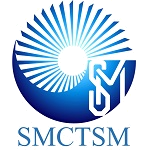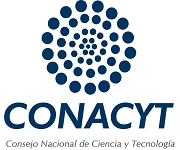Chemical reduction of NiO-8YSZ for production of Ni-8YSZ cermets useful as anodes in solid oxide combustion cells
Keywords:
Chemical reduction, Anode, Ni-YSZ, Cermets.Abstract
In this work a thermodynamic study about the heat treatment processing conditions and chemical reduction in order to obtain useful cermets as anode in Solid Oxide Fuel Cells (SOFC) were performed. Compacts of a mixture of NiO and 8YSZ, modifying the weight of the components: 30, 50 and 70% in weight of NiO, were made. Compaction pressures were varied from 400 to 1000 MPa. Cermet formation took place subsequently reducing NiO to metallic Ni under hydrogen atmosphere (H2) at 1100 °C for 2 h in a tube furnace. The density and porosity of the compact were determined by applying Archimedes method. By means of scanning electron microscopy were obtained the porosity and the morphology qualitatively, as well as the presence and homogeneity of the metallic Ni cermets. The results show that Ni-8YSZ cermets can be obtained in the experimental conditions tested, which should be analyzed for use as anodes in fuel cells.References
. M. Morales, J. J. Roa, X. G. Capdevila, M. Segarra, S. Piñol, Boletín de la Sociedad Española de Cerámica y Vidrio, 49, 67, (2010).
. D. G. Lamas, G. E. Lascalea, M. D. Cabezas, R.O. Fuentes, I. O. Fábregas, M. E. Fernández de Rapp, N. E. Walsöe de Reca, S. Larrondo, R. Tejeda, N. Amadeo. Jornadas Sam/Conamet/Simposio material, 13, 1030, (2003).
. J. W. Fergus, R. Hui, X. Li, D. P. Wilkinson, J. Zhang, Solid Oxide Fuel Cells. 1ra. ed. (Boca Raton, Florida, 2009).
. M. Mukhopadhyay, J. Mukhopadhyay, A. D. Sharma, R. N. Basu, International Journal of Hydrogen Energy, 37, 2524, (2012).
. P. Chinda, S. Chanchaona, P. Brault, W. Wechsatol, The European Physical Journal Applied Physics, 54, 23405, (2011).
. H. S. Hong, U. S. Chae, K. M. Park, S. T. Choo, Materials Science Forum, 486-487, 662, (2005).
. N. Bahiyah Baba, W. Waugh, A. M. Davidson, Engineering and Technology, 49, 715, (2009).
. T. S. Lin, D. C. Jian, K. N. Sun, Key Engineering Materials, 437, 336, (2007).
. J. A. Arias, D. Hotza, Revista Latinoamericana de Metales y Materiales, 33, 172, (2012).
. S. D. Kim, H. Moon, S. H.hyun, J. Moon, J. Kim, H. W. Lee, Solid State Ionics, 177, 931, (2006).
. S. Mosch, N. Trofi menko, M. Kusnezoff, T. Betz, M. Kellner, Solid State Ionics, 179, 1606, (2008).
. Y. Lia, Y. Xiea, J. Gongb, Y. Chena, Z. Zhangb, Materials Science and Engineering: B., 86, 119, (2001).
. H. Abe, K. Murata, T. Fukui, W. J. Moon, K. Kaneko, M. Naito, Thin Solid Films, 496, 49, (2006).
. M. Mukhopadhyay, J. Mukhopadhyay, A. Das Sharm, R.N. Basu, Materials science and Engineering B-Advanced Functional Solid-State Materials, 163, 120, (2009).
. T. Talebi, M. H. Sarrafi , M. Haji, B. Raissi, A. Maghsoudipour, International Journal of Hydrogen Energy, 35, 9440, (2010).
. T. Hibino, S. Wang, S. Kakimoto, M. Sano, Solid State Ionics, 127, 89, (2000).
. A. Roine,
Downloads
Published
Issue
Section
License
©2025 by the authors; licensee SMCTSM, Mexico. This article is an open access article distributed under the terms and conditions of the Creative Commons Attribution license (http://creativecommons.org/licenses/by/4.0/).





